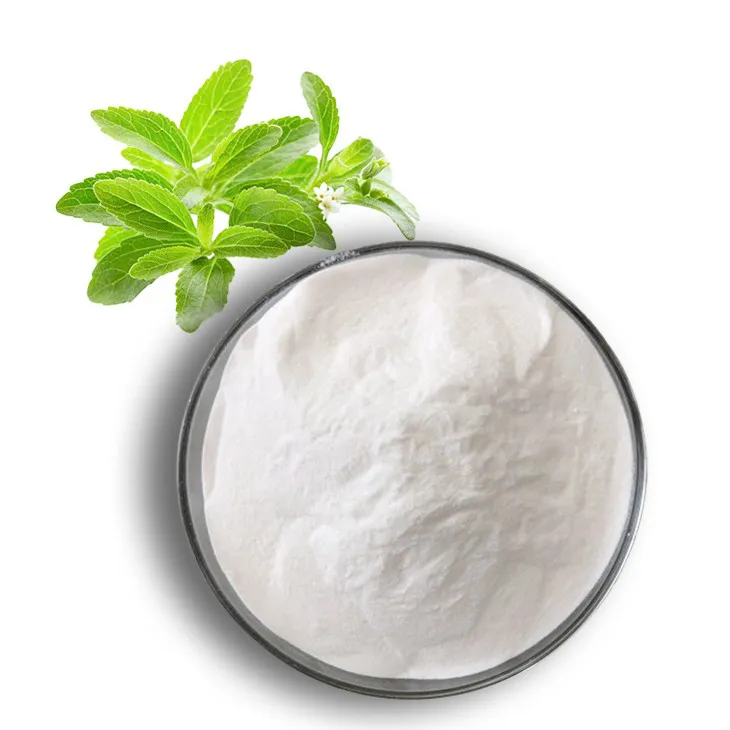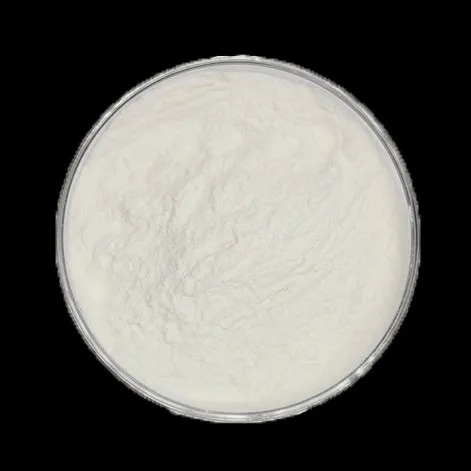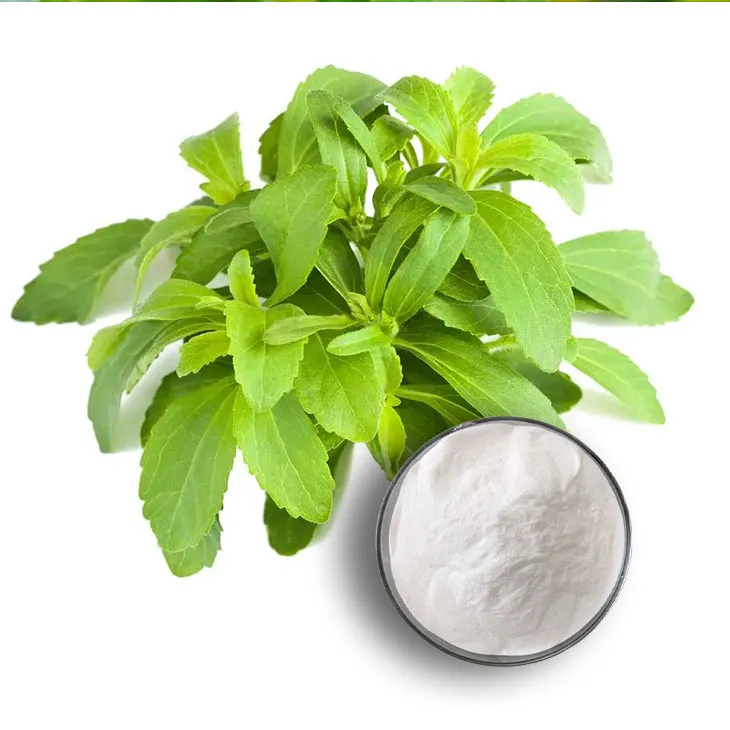- 0086-571-85302990
- sales@greenskybio.com
The Evolution of Stevia Extraction: A Historical Perspective
2024-07-22

1. Introduction
Stevia, a natural sweetener, has a long and interesting history. Stevia Extraction has come a long way from its early days of use. This article will explore the historical factors that have influenced the evolution of Stevia Extraction, including cultural uses and emerging health trends. It will also discuss how these factors have contributed to making stevia a popular sweetener option today.

2. The Origins of Stevia
Stevia is native to South America, specifically the regions of Paraguay and Brazil. The indigenous people of these areas have been using stevia for centuries. They used it not only as a sweetener but also for its medicinal properties. The leaves of the stevia plant were chewed directly or used to sweeten herbal teas. This traditional use was the starting point for the discovery of stevia's potential as a sweetener on a larger scale.

3. Early Extraction Methods
3.1 Crude Extracts
In the early days, the extraction of stevia was very basic. Simple water - based extractions were used. The leaves of the stevia plant were soaked in water, and the resulting liquid was used as a sweetener. This crude extract was far from pure but was effective in providing a sweet taste. However, it had limitations in terms of taste consistency and shelf - life.
3.2 Alcohol - Based Extractions
As knowledge of extraction techniques advanced, alcohol - based extractions were also explored. Alcohol was used to dissolve the sweet compounds from the stevia leaves. This method produced a more concentrated extract compared to water - based extractions. However, the presence of alcohol in the extract had its own drawbacks, such as potential safety concerns and restrictions on its use in certain products.

4. Cultural Influences on Stevia Extraction
- In South American Cultures: The traditional use of stevia in South American cultures continued to influence extraction methods. As the demand for stevia grew within these regions, efforts were made to improve the extraction process while still maintaining the essence of the traditional use. For example, local producers aimed to create extracts that had a taste similar to the freshly - used stevia leaves.
- In Asian Cultures: Stevia was introduced to Asian cultures, especially in countries like Japan. In Japan, there was a high demand for natural sweeteners due to cultural preferences for healthy and natural products. This led to further research on stevia extraction. Japanese researchers focused on developing extraction methods that could produce high - quality stevia extracts with a pure taste and long shelf - life. Their work influenced extraction techniques globally as other countries looked to Japan's success in stevia product development.

5. The Impact of Health Trends on Stevia Extraction
- The Rise of Low - Calorie Diets: With the increasing popularity of low - calorie diets in the Western world, stevia emerged as an ideal sweetener. As a result, there was a greater need for more refined extraction methods to produce stevia extracts that were pure and free from any unwanted substances. This led to the development of advanced filtration and purification techniques in stevia extraction.
- Diabetes and Stevia: The prevalence of diabetes also played a significant role. Stevia, being a non - caloric sweetener, was seen as a safe alternative for diabetics. To meet the requirements of diabetic patients, extraction processes were refined to ensure that the final stevia product had a consistent level of sweetness and did not have any negative impacts on blood sugar levels. This involved careful control of the extraction parameters to isolate the sweet - tasting compounds accurately.
6. Modern Extraction Techniques
6.1 Supercritical Fluid Extraction
One of the most advanced extraction techniques used today for stevia is supercritical fluid extraction. This method uses a supercritical fluid, typically carbon dioxide, to extract the sweet compounds from the stevia leaves. The advantages of this technique are numerous. It allows for a more precise extraction, resulting in a purer product. It also operates at relatively low temperatures, which helps to preserve the integrity of the sweet compounds. Additionally, since carbon dioxide is a gas at normal conditions, it can be easily removed from the final extract, leaving behind a high - quality stevia extract.
6.2 Enzymatic Treatment
Enzymatic treatment is another modern approach in stevia extraction. Enzymes are used to break down the cell walls of the stevia leaves, making it easier to extract the sweet compounds. This method can improve the yield of the extraction process and can also enhance the taste of the final stevia extract. By carefully selecting the appropriate enzymes and optimizing the treatment conditions, producers can create stevia extracts with a more desirable flavor profile.
7. Quality Control in Stevia Extraction
- Purity Testing: In modern stevia extraction, purity testing is of utmost importance. Advanced analytical techniques such as high - performance liquid chromatography (HPLC) are used to determine the purity of the stevia extract. This ensures that the final product contains only the desired sweet compounds and is free from contaminants.
- Sweetness Standardization: Since stevia extracts can vary in their level of sweetness, sweetness standardization is necessary. Producers use various methods to adjust the sweetness of the extract to a consistent level. This is crucial for ensuring that consumers get a predictable sweetening effect when using stevia products.
8. The Future of Stevia Extraction
- Sustainable Extraction: As environmental concerns grow, there will be a focus on developing more sustainable extraction methods. This could involve using renewable energy sources in the extraction process or finding ways to reduce waste.
- New Compounds and Applications: Research may lead to the discovery of new compounds in the stevia plant that could have additional health benefits or unique flavor profiles. This could open up new applications for stevia extracts in the food and beverage industry.
- Improved Efficiency: Continued research will likely lead to further improvements in extraction efficiency. This could result in lower production costs and more widespread availability of high - quality stevia extracts.
9. Conclusion
The evolution of stevia extraction has been shaped by a variety of historical factors, including cultural uses and emerging health trends. From its crude beginnings with simple water - and alcohol - based extractions, stevia extraction has advanced to modern techniques such as supercritical fluid extraction and enzymatic treatment. These advancements, along with strict quality control measures, have made stevia a popular and reliable sweetener option today. Looking to the future, there are exciting possibilities for further development in stevia extraction, which could bring even more benefits to consumers and the food industry as a whole.
FAQ:
What were the early methods of stevia extraction?
In the early days, simple methods such as traditional water - based extraction were likely used. This involved soaking the stevia leaves in water to draw out the sweet components. These early methods were relatively crude compared to modern techniques but laid the foundation for further development.
How did cultural uses impact the evolution of stevia extraction?
Culturally, stevia has been used in some regions for centuries as a natural sweetener. In areas where it was native, like parts of South America, traditional uses influenced the initial exploration of extraction. For example, local knowledge of how to prepare stevia in a palatable form led to the first attempts at more formal extraction methods to make it more widely available and useful.
What health trends have driven the evolution of stevia extraction?
The increasing trend towards healthier eating and a reduced intake of refined sugars has been a major driver. As consumers became more health - conscious, there was a greater demand for natural sweeteners like stevia. This led to more research and development in extraction techniques to produce purer, more concentrated forms of stevia with a better taste profile.
How has the evolution of extraction techniques improved the taste of stevia?
Early stevia extracts often had a bitter aftertaste. Over time, extraction techniques have been refined. New methods such as advanced chromatography and enzymatic treatments have been able to isolate the sweet components more precisely while reducing or eliminating the bitter compounds. This has made stevia a more appealing sweetener option in terms of taste.
What role has modern technology played in stevia extraction?
Modern technology has been crucial. For instance, the use of supercritical fluid extraction has allowed for more efficient and selective extraction of stevia's sweet compounds. Additionally, spectroscopic techniques help in quality control during the extraction process. These technological advancements have not only improved the quality of stevia extracts but also made the extraction process more sustainable and cost - effective.
Related literature
- The History and Future of Stevia Extraction"
- "Cultural Significance of Stevia and its Impact on Extraction Techniques"
- "Health Trends and the Evolution of Stevia as a Sweetener: An Analytical Review"
- ▶ Hesperidin
- ▶ citrus bioflavonoids
- ▶ plant extract
- ▶ lycopene
- ▶ Diosmin
- ▶ Grape seed extract
- ▶ Sea buckthorn Juice Powder
- ▶ Beetroot powder
- ▶ Hops Extract
- ▶ Artichoke Extract
- ▶ Reishi mushroom extract
- ▶ Astaxanthin
- ▶ Green Tea Extract
- ▶ Curcumin Extract
- ▶ Horse Chestnut Extract
- ▶ Other Problems
- ▶ Boswellia Serrata Extract
- ▶ Resveratrol Extract
- ▶ Marigold Extract
- ▶ Grape Leaf Extract
- ▶ blog3
- ▶ blog4
- ▶ blog5
-
Lemon Extract
2024-07-22
-
Agaricus Blazei Extract
2024-07-22
-
Kelp Extract Powder
2024-07-22
-
Echinacea Extract
2024-07-22
-
Polygonum Cuspidatum Extract
2024-07-22
-
Cactus Extract
2024-07-22
-
Grapefruit Seed Extract Powder
2024-07-22
-
Maitake Mushroom Extract
2024-07-22
-
Calendula Extract
2024-07-22
-
Moringa powder
2024-07-22





















